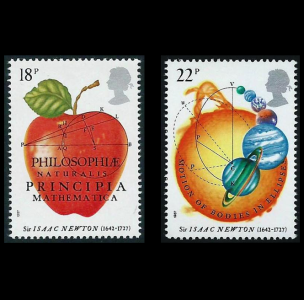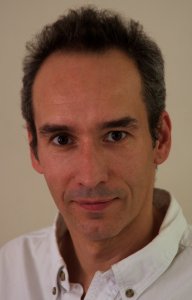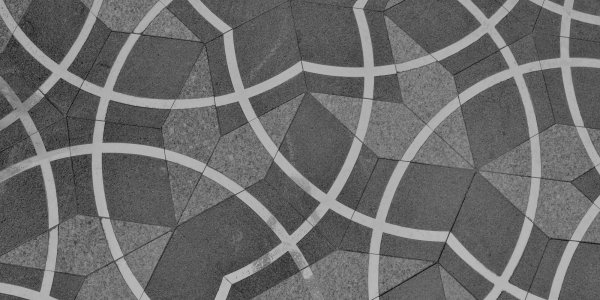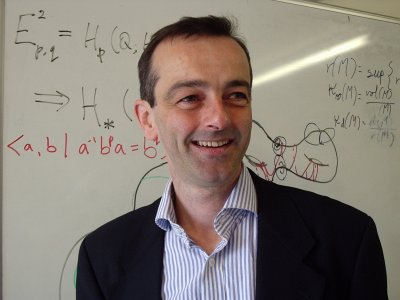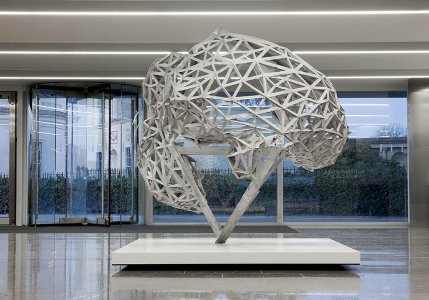As you enter the main entrance lobby of the Andrew Wiles Building you are greeeted by Axiom. Created by artist Mat Chivers, the sculpture is the winner of the Mathematical Institute's Sculpture Competition. The competition invited artists to propose, and eventually create, a substantial and artistically significant sculpture to be placed in the main entrance lobby. We would encourage you all to visit and meanwhile allow Mat to explain the work and its construction.
Axiom
2014
Cast aluminium
2.2 x 2 x 1.8 m
‘Axiom’ combines three mathematical ideas - symmetry, asymmetry and entropy - in a sculpture that was made using a combination of hand made and contemporary digital envisioning and fabrication processes.
The complex layering used to develop the sculpture is central to the meaning of the work. The rough quality of some of the areas of the sculpture is a result of digital ‘noise’ resulting from the translation between different modes of fabrication and is intended to act as a memory of the journey through the processes by which it was made.
Alluding to some of the ways that we attempt to understand reality, it is an intentionally open visual proposition, designed to invite interpretation depending on what each viewer sees.
Notes on the process
Six equilateral plywood triangles were physically joined in a symmetrical configuration so that they partially enclose space. Polyurethane foam was then injected into the void which expanded, constrained by the containing geometry.
The resulting object (measuring 20 x 18 x 17 cm) was digitally scanned, resulting in a virtual mesh composed of 4.5 million triangles; the number of polygons in the mesh was then reduced to under seven hundred.
A computer script was applied to the data enabling the mesh to be built as a physical object with the dimensions of the individual triangular profile sections of lattice having a width that is proportional to their length.
A seven-axis robotic milling machine was used to make the full size object in high density polyurethane foam, which was then used as a sacrificial core - encased in plaster and burnt out with molten aluminium. The plaster residue from the casting process remains visible on the surface of the sculpture as a subtle white patination.
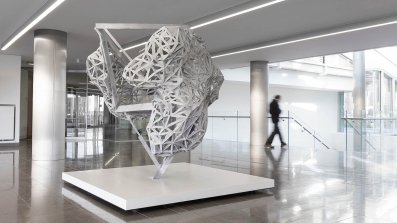
Photographs by Quintin Lake


